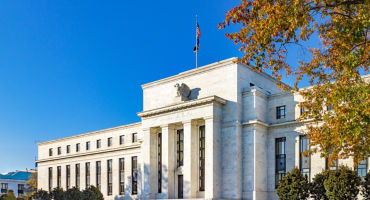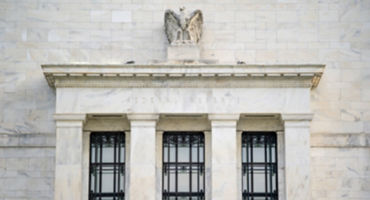Skip to main content
- Funds
- Insights
- Capabilities
- About Us
- My Account
The views expressed are those of the author at the time of writing. Other teams may hold different views and make different investment decisions. The value of your investment may become worth more or less than at the time of original investment. While any third-party data used is considered reliable, its accuracy is not guaranteed. For professional, institutional, or accredited investors only.
Equity markets fell dramatically last Friday after US Federal Reserve (Fed) Chair Jerome Powell delivered a short speech at the Fed’s annual Jackson Hole conference. In my view, two things made Powell’s latest speech more hawkish than his prior comments this year:
Powell’s latter statement struck me as particularly hawkish given the further supply-chain disruptions that might result from the ongoing European gas crisis.
The question is: Why did Powell feel the need to sound a decidedly more hawkish note in his statements last week?
Over the past several weeks, the Fed has been actively trying to “push back” on the market’s interpretation of recent economic data releases — such as the lower-than-expected July inflation print (8.5%, down from 9.1% in June), as well as weaker GDP growth numbers. At the beginning of August, the market was pricing in that the Fed would hike its policy rate to 3.5% by early 2023, but then engage in a rate-cutting cycle until the policy rate reached 2.75% by the end of 2023. Powell felt it was time to set the record straight and redirect the market narrative that had taken hold.
While Powell’s words and tone last week certainly surprised (read: unnerved) markets, I believe the Fed has considerably more policy flexibility now that the fed funds rate is closer to the central bank’s definition of “neutral” — the rate at which monetary policy is neither contractionary nor expansionary. The Fed now faces three key decisions:
The Fed seems intent on moving rates quickly above neutral in an effort to anchor inflation expectations; however, there is a fair amount of consensus within the Fed these days that the peak rate it will need to target is somewhere in the neighborhood of 3.5% to 4.25% — and that it anticipates holding the policy rate there for at least two years.
However, the Fed is now in “data-dependent” mode and, as such, the answers to these three questions might change going forward based on incoming information.
The most important data the Fed will be watching in the months ahead will come from the US labor market. The last nonfarm payrolls employment report was exactly the opposite of what the Fed wanted to see. We had really strong job growth (i.e., labor demand), yet the labor force participation rate has continued to fall (i.e., less labor supply). I believe the Fed will want to see job growth slow and/or labor supply increase in order to change its policy stance.
On the inflation front, we learned through Powell’s speech that even if realized inflation did top out in June 2022, the Fed is very focused on anchoring inflation expectations. Market-implied measures of inflation expectations are within the Fed’s preferred range, but survey-based measures remain too high for the Fed’s comfort. Unfortunately for markets, we also learned last Friday what the Fed is not planning to take into account in its monetary policy decisions: slowing economic growth and the effect on markets that higher interest rates are likely to have.
Featured unique perspectives

FOMC: Easing into uncertainty
Fixed Income Portfolio Manager Jeremy Forster profiles the Fed's December rate cut, labor market trends, inflation pressures, and the role of anticipated changes to FOMC leaders in 2026.

Chart in Focus: Is the Fed rate cut positive for risk?
In this edition of Chart in Focus, we examine how the Fed’s long-awaited interest rate cut may influence risk assets.

The Fed architecture under scrutiny: What are the investment implications?
Macro Strategist Juhi Dhawan looks at how changes in the Federal Reserve's personnel and decision making could impact policy, the US dollar, and financial markets.

FOMC: Cushioning the US labor market
Fixed Income Portfolio Manager Jeremy Forster analyzes the Fed's decision to cut interest rates at the September FOMC meeting.

Twilight zone: how to interpret today’s uncertain macro picture
Macro Strategist John Butler and Investment Director Marco Giordano explore how to interpret today’s uncertain macroeconomic picture and its key implications.

Rethinking the Fed’s dual mandate
Is it time for a fresh perspective on the dual mandate? Fixed Income Portfolio Manager Brij Khurana explores the potential benefits of reorienting monetary policy toward maximizing productivity.

Stagflation watch: Thoughts on tariffs, inflation, and Fed policy
US Macro Strategist Juhi Dhawan considers signs the US economy may be moving toward a toxic mix of slowing growth and rising inflation, creating challenges for the Fed and investors.

Severance: The split between the economy and the markets
While markets have bounced back since Liberation Day, policy changes and macro data bear watching. Heading into the second half of 2025, we're focused on relative opportunities across asset classes created by disconnects and divides between markets and economies.

Oh baby, baby, it’s a wild world
Just one quarter into the year, many policy and economic assumptions have been turned on their head. What does it all mean for equity, bond, and commodity markets around the world? Members of our Investment Strategy & Solutions Group offer their outlook.

Fed delivers rate cut, but hawkish 2025 guidance sends yields up
Fixed Income Analyst Caroline Casavant examines the outcome of the December 18 Federal Open Market Committee meeting and the implications for rates, inflation, and real growth.

Going their separate ways: Capitalizing on bond divergence
Our fixed income experts discuss how to position portfolios for a world of uncertainty and divergence, exploring key themes and evolving bond opportunities for 2025.
URL References
Related Insights